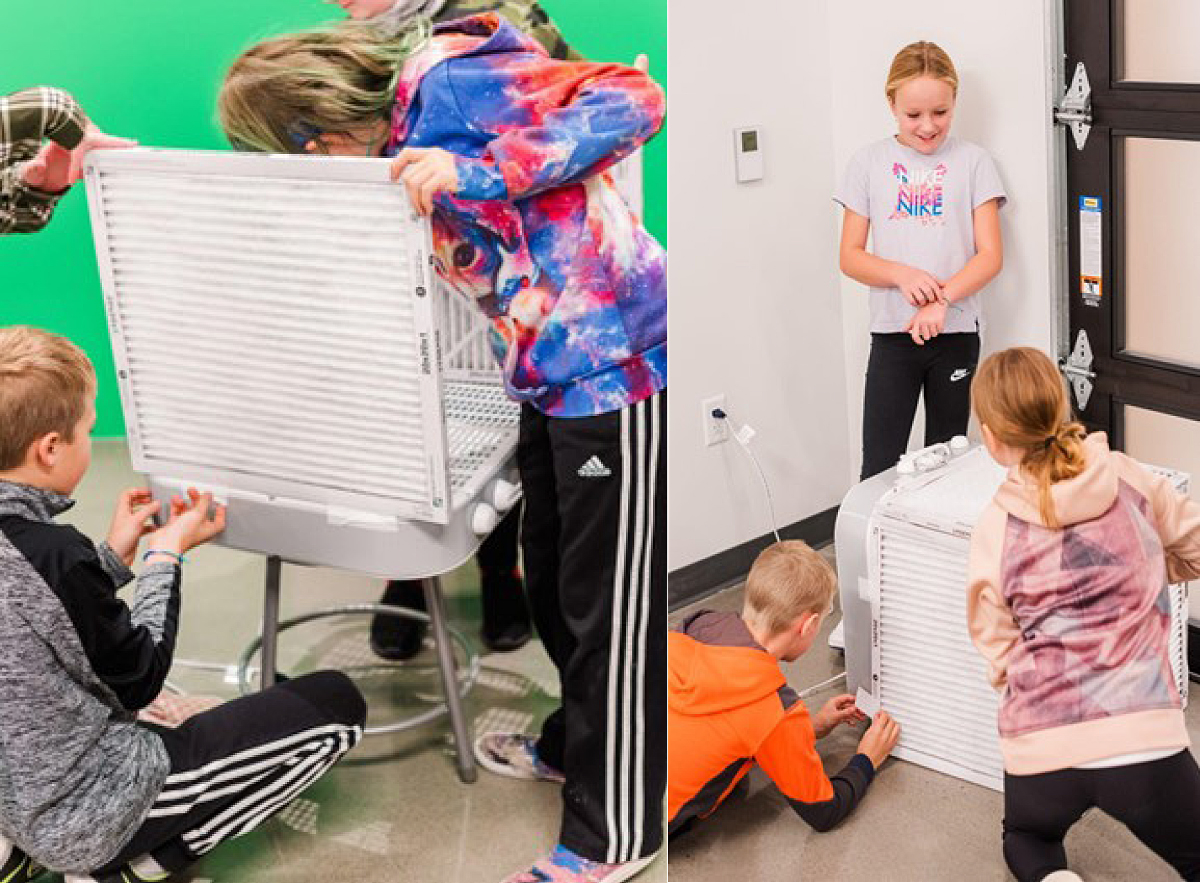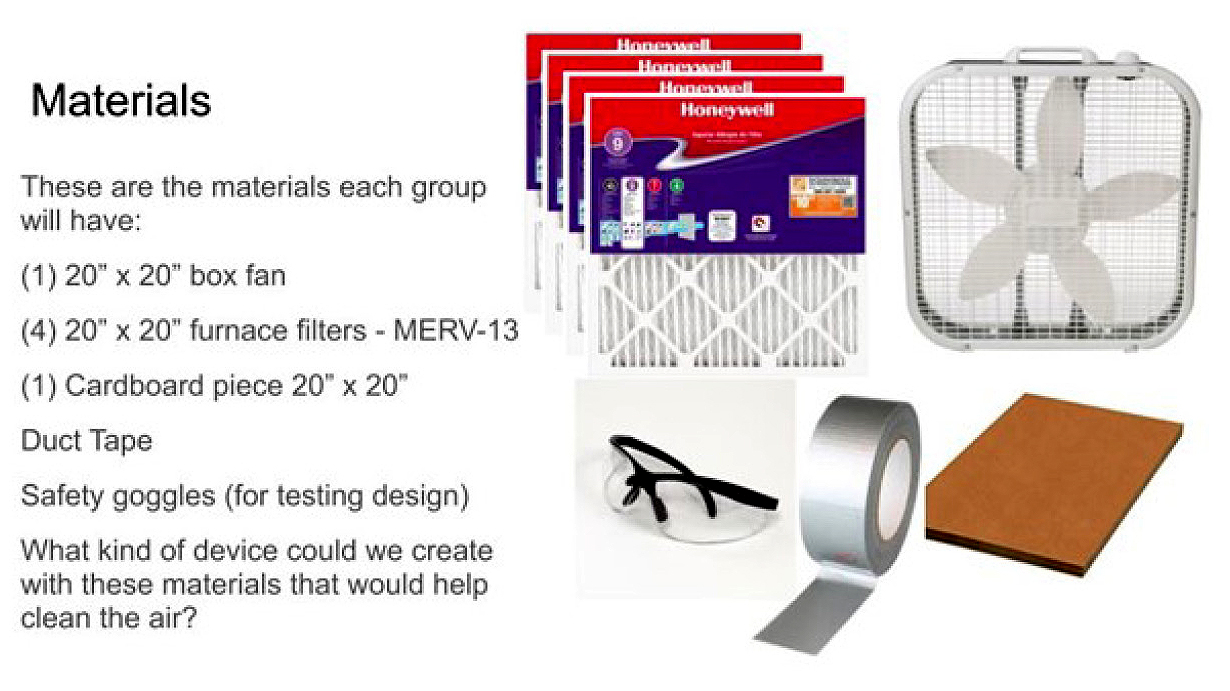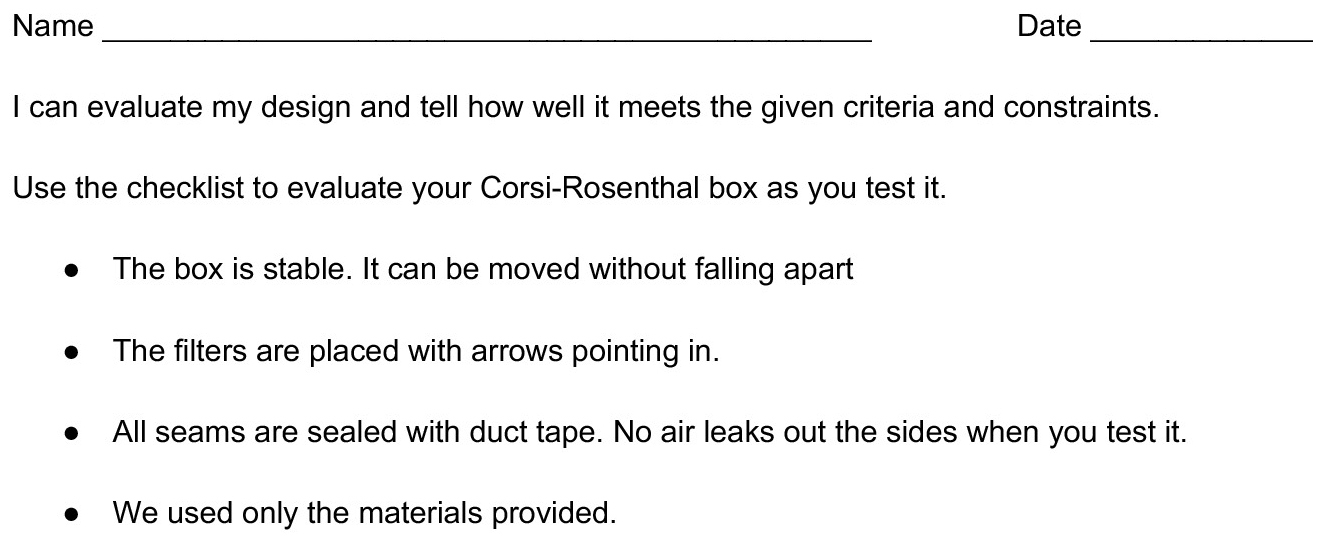engineering encounters
Fostering Community-Engaged Problem-Solvers
Utilizing engineering design process to mitigate impacts of natural disasters
Science and Children—May/June 2023 (Volume 60, Issue 5)
By Amanda Rapstad, Rebekah Hammack, and Nicholas Lux

The Next Generation Science Standards call for elementary children to engage in design problems that provide opportunities to apply their science knowledge (NGSS Lead States 2013). Additionally, educational research promotes connecting classroom learning to local places to build a bridge between children’s personal and school lives (Gruenewald and Smith 2014). Taken together, these concepts point to the importance of contextualizing design activities around local engineering opportunities to provide students with meaningful connections between school and community. Situating engineering design activities within local contexts also helps students see the relevance of science and engineering within their everyday lives.
The activity shared in this article describes a series of three 45-minute lessons that took place in a fourth-grade classroom in response to a late season wildfire that occurred in December 2021. The lesson was developed as part of a grant program in which teachers collaborated through professional learning communities to develop and implement place-based engineering activities.
Due to drought conditions and multiple severe fire seasons that filled the local mountain valley with wildfire smoke, the students were very familiar with the hazards of wildfire. In the summer of 2021, over one million acres burned throughout Montana. While summer fires are common, winter conditions usually mean residents get reprieve from fires during winter months. However, unseasonably warm winter weather and drought conditions mean more Montanans are starting to experience fires later in the season. According to a U.S. Forest Service study from 2015, fire seasons are about 78 days longer than in 1970. In addition, the United States burns twice as many acres as three decades ago, with that number expected to double again by mid-century (USFS 2015). It is important for students to understand the reasons why wildfires occur, the impacts they have on people and the environment, and the steps they can take to help lessen those impacts.
In December 2021, a late season wildfire caused by downed power lines and exacerbated by high winds devastated the small community of Denton, Montana. The students were very empathetic to the situation, given their personal experience with local fires the year before, and, due to that lens of empathy, wanted to know what they could do to help. After a discussion with her professional learning community, the teacher saw an opportunity to utilize a place-based engineering activity where students could do something to help in a relevant and authentic way. The teacher used the engineering design process to walk students through creating filters they could send to the community to help clear the air after the fire.
Lesson 1: Define a Problem, Research, and Imagine a Solution
During the first lesson, the teacher discussed with students the following problem: Smoke and ash from the fire are lingering in homes that remain standing. Wildfire smoke can be very dangerous to people’s health. The students then read news articles about the fire and discussed the causes, including that since June the area had been under a D4 level drought, the most extreme drought level. With the added fact that there was no snow on the ground, and extreme amounts of Kochia, also known as “Mexican fire brush” or “burning bush,” perfect conditions for a fire were created.
After discussing causes of the fire, students read about wildfire smoke, focusing on smoke particle size. Students learned that particle sizes are grouped into two categories: course (PM10) and fine (PM2.5). They learned that wildfire smoke is 90% composed of fine particles, which pose the greatest health risk as they can travel deep into the lungs and even into the bloodstream (EPA).
With this information in mind, the teacher gave them the following question to consider: How can we think like an engineer to design a product that will help clear smoke and particles from the air to help those affected by the fire? The teacher already had a product in mind, Corsi-Rosenthal boxes, a type of affordable air cleaner developed as a response to the COVID-19 pandemic but wanted to walk students through the brainstorming process of imagining possible solutions. The students were given time in small groups of about four students to think of possible solutions to clear smoke from the air. The teacher grouped students based on her knowledge of their abilities and backgrounds, ensuring that each group member brought a unique perspective and skill set to the group. Figure 1 includes a list of student-generated possible solutions.
Results of small-group brainstorming.
- Create a vacuum device to suck out smoke and ash
- Reverse fire extinguisher
- Something that has a filter
- Filter and fan to collect pollution that can be dumped out and cleaned
After completing the small-group brainstorm, the class came together and brainstormed as a whole. Originally, students wanted to use a vacuum to pull smoke from the air. This led students into the idea of creating a “reverse fire extinguisher.” Students who thought of this knew that the particles in the air had to be contained somewhere but decided that a fire extinguisher would be hard for them to develop. At this point, a student mentioned filters because he had seen his parents changing a filter for their furnace and knew that “filters clean air.” The teacher asked the student to share more about what using a filter would look like. Several students then started discussing how they could create a cardboard box that would have a filter attached to a fan on one side that would pull all the particles into the box and collect them.
Lesson 2: Planning and Testing
The second lesson began with a recap of the conversation from the previous lesson. The teacher then presented the students with their materials. The students had a set of materials in the classroom that they could look at during the planning process as well (Figure 2). The teacher gave them an engineering design notebook sheet from teachergeek.com (see Online Resources) to help them walk through the engineering design process as well as to formatively assess the students as they worked through the challenge. Students were given about 15 minutes to plan and worked in groups of four to design a plan using the materials available. There were six groups of four so students were able to create six boxes in total. Most groups came up with one plan; however, some groups chose to create individual plans that they would all test.

Materials available for design task.
After planning, each group of students were given their materials and space to build and test their filters and a checklist to evaluate how well their design met the criteria and constraints (Figure 3). At this point students had not been given any information or instructions for how to build the Corsi-Rosenthal boxes. The students worked on the boxes for about 30 minutes. Some of the biggest challenges they faced were figuring out which way the filters and fan should face. Students tested fans as they had conversations about which way the air was blowing. Please note that safety precautions should be taken when running the fans, including having students wear safety goggles as they test their filters when the fans are running, as well as discussing how to safely plug in and remove an electrical item from an outlet. Originally, many of the students thought that the fan should be blowing into the box because they thought the air had to blow into the filter to be cleaned. Throughout this process, the teacher circulated and asked questions to the groups of students, prompting them to make close observations of the filters. At this point, several students noticed the filters were marked with arrows. One student said, “I think we need to have the fan pointed out because the filters have arrows so they’ll bring in the bad air and the fan will push out the good air.” After this realization, many students adjusted their building approach.

Assessment checklist for filter box designs.
Several of the groups were able to successfully put together the filters without formal instructions, while some groups struggled due to issues with team work or frustration when the design wasn’t working. At the end of this testing period the teacher led the students in a discussion about what went well and what failed, which served as an additional opportunity to assess student thinking about engineering design. The teacher had previously been doing a lot of social emotional work with the students regarding how to respond to failure. Many engineers had visited the classroom and talked about how failure and redesign is a part of their work, so this was a good opportunity to reinforce those ideas.
Lesson 3: Redesign and Sharing
The third day students were given the actual instructions for creating a Corsi-Rosenthal box so they could adapt their boxes as needed to make them more efficient (see Online Resources). Several groups had the boxes put together but just needed to reinforce the seams with tape, while other groups had to take their boxes apart and rebuild to make sure filters and the fan were facing in the right direction. It is important to note that this was a real solution that needed to be implemented in a timely manner, so it was imperative that the designs functioned properly. This is why some students redesigned their boxes to more closely follow the instructions after a discussion on how their designs differed from the inventors’ design. Given more time and materials, teachers could have students build a new box following instructions without taking apart their design. Then, they could compare the two designs and test them to see which functioned more efficiently.
At this point, the filter boxes were ready to share with the community. Because Denton is a several hour drive from the school, the teacher had to do some community outreach to find a way to transport the boxes. Through collaboration with the principal of the school, an announcement was made on the local radio station that the school was looking for someone to transport the boxes. A teacher in a small community nearby heard the announcement and felt compelled to help out. She was able to pick up the boxes within one day and transport them to another town where a volunteer from Denton was able to pick them up. Several boxes had been claimed before they arrived, while the rest were placed in a central location in the community for people to take as needed.
Student Response
After hearing the radio announcement, the teacher was contacted by a local news station and the local newspaper. The students and teacher were interviewed for both and had a chance to talk about the engineering grant and how it has impacted students. During the interview, one student said, “I feel like a real engineer. I feel good about myself,” while another said, “It makes me feel like I’m accomplishing something.” For the remainder of the year, when students visited with engineers about other projects, they always made sure to mention how they are already engineers and were quick to show visitors the newspaper article about the filter project. While the fire was not in their immediate local community, the students have lived experiences with seasonal fires that affect their access to clean air. Engaging in this lesson not only allowed them to build content knowledge and engineering design skills, but also empowered them with the understanding that they are capable of doing something to mitigate the effects of natural disasters like this. Beyond the science and engineering skills students gained they also were able to practice empathy and use their skills to help others.
Final Thoughts
While this series of lessons was specific to Montana and its wildfire season, many places experience similar issues with air quality, and these lessons can easily be adapted for use in other communities. The boxes were initially designed to clean classroom air during the COVID-19 pandemic, which opens additional opportunities for service learning. The materials to build the filters are relatively inexpensive, and in this case were provided by a grant. In the absence of grant funding, teachers could reach out to local organizations to help with securing materials.
While the topic of wildfires does not fall directly within the assessment boundary, the relevance of the topic to the students in this classroom was of paramount importance. Engaging in engineering design that was connected to a real problem of personal and local relevance to the students made them feel “like real engineers” who were able to bring about positive change in the world. Presenting students with such opportunities is important to helping them realize the impacts that they and other humans can have on the world around them, while also encouraging them to be mindful of these impacts.
Acknowledgment
This material is based upon work supported by the National Science Foundation Research in the Formation of Engineers program under Grant Number 1916673. Any opinions, findings, and conclusions or recommendations expressed in this material are those of the authors and do not necessarily reflect the views of the National Science Foundation.
Online Resources
Corsi-Rosenthal Cube https://encycla.com/Corsi-Rosenthal_Cube
Engineering Notebook Template http://teachergeek.org/engineering_notebook.pdf
EPA: Why Wildfire Smoke is a Health Concern www.epa.gov/wildfire-smoke-course/why-wildfire-smoke-health-concern#linking
Amanda Rapstad is a fourth-grade teacher at Story Creek Elementary School in Belgrade, Montana. Rebekah Hammack (rebekah.hammack@montana.edu) is an assistant professor of curriculum and instruction, and Nicholas Lux is an associate professor of curriculum and instruction, both at Montana State University in Bozeman, Montana.
Earth & Space Science Engineering Phenomena Elementary Grade 4


